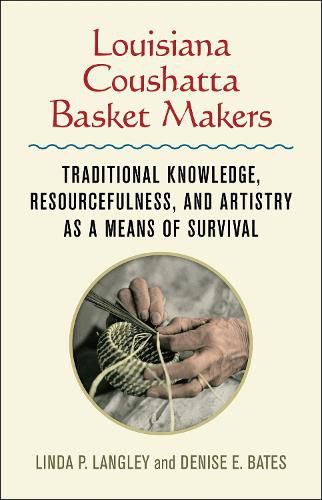Readings Newsletter
Become a Readings Member to make your shopping experience even easier.
Sign in or sign up for free!
You’re not far away from qualifying for FREE standard shipping within Australia
You’ve qualified for FREE standard shipping within Australia
The cart is loading…






This title is printed to order. This book may have been self-published. If so, we cannot guarantee the quality of the content. In the main most books will have gone through the editing process however some may not. We therefore suggest that you be aware of this before ordering this book. If in doubt check either the author or publisher’s details as we are unable to accept any returns unless they are faulty. Please contact us if you have any questions.
Louisiana Coushatta Basket Makers brings together oral histories, tribal records, archival materials, and archaeological evidence to explore the fascinating history of the Coushatta Tribe’s famed basket weavers. After settling at their present location near the town of Elton, Louisiana, in the 1880s, the Coushatta (Koasati) tribe developed a basket industry that bolstered the local tribal economy and became the basis for generating tourism and political mobilization. The baskets represented a material culture that distinguished the Coushattas as Indigenous people within an ethnically and racially diverse region. Tribal leaders serving as diplomats also used baskets as strategic gifts as they built political and economic allegiances throughout the twentieth century, thereby securing the Coushattas’ future.
Behind all these efforts were the basket makers themselves. Although a few Coushatta men assisted in the production of baskets, it was mostly women who put in the long hours to gather and process the materials, then skillfully stitch them together to produce treasures of all shapes and sizes. The art of basket making exists within a broader framework of Coushatta traditional teachings and educational practices that have persisted to the present.
As they tell the story of Coushatta basket makers, Linda P. Langley and Denise E. Bates provide a better understanding of the tribe’s culture and values. The weavers’ own
language of baskets
shapes this narrative, which depicts how the tribe survived repeated hardships as weavers responded on their own terms to market demands. The work of Coushatta basket makers represents the perseverance of traditional knowledge in the form of unique and carefully crafted fine art that continues to garner greater recognition and appreciation with every successive generation.
$9.00 standard shipping within Australia
FREE standard shipping within Australia for orders over $100.00
Express & International shipping calculated at checkout
This title is printed to order. This book may have been self-published. If so, we cannot guarantee the quality of the content. In the main most books will have gone through the editing process however some may not. We therefore suggest that you be aware of this before ordering this book. If in doubt check either the author or publisher’s details as we are unable to accept any returns unless they are faulty. Please contact us if you have any questions.
Louisiana Coushatta Basket Makers brings together oral histories, tribal records, archival materials, and archaeological evidence to explore the fascinating history of the Coushatta Tribe’s famed basket weavers. After settling at their present location near the town of Elton, Louisiana, in the 1880s, the Coushatta (Koasati) tribe developed a basket industry that bolstered the local tribal economy and became the basis for generating tourism and political mobilization. The baskets represented a material culture that distinguished the Coushattas as Indigenous people within an ethnically and racially diverse region. Tribal leaders serving as diplomats also used baskets as strategic gifts as they built political and economic allegiances throughout the twentieth century, thereby securing the Coushattas’ future.
Behind all these efforts were the basket makers themselves. Although a few Coushatta men assisted in the production of baskets, it was mostly women who put in the long hours to gather and process the materials, then skillfully stitch them together to produce treasures of all shapes and sizes. The art of basket making exists within a broader framework of Coushatta traditional teachings and educational practices that have persisted to the present.
As they tell the story of Coushatta basket makers, Linda P. Langley and Denise E. Bates provide a better understanding of the tribe’s culture and values. The weavers’ own
language of baskets
shapes this narrative, which depicts how the tribe survived repeated hardships as weavers responded on their own terms to market demands. The work of Coushatta basket makers represents the perseverance of traditional knowledge in the form of unique and carefully crafted fine art that continues to garner greater recognition and appreciation with every successive generation.